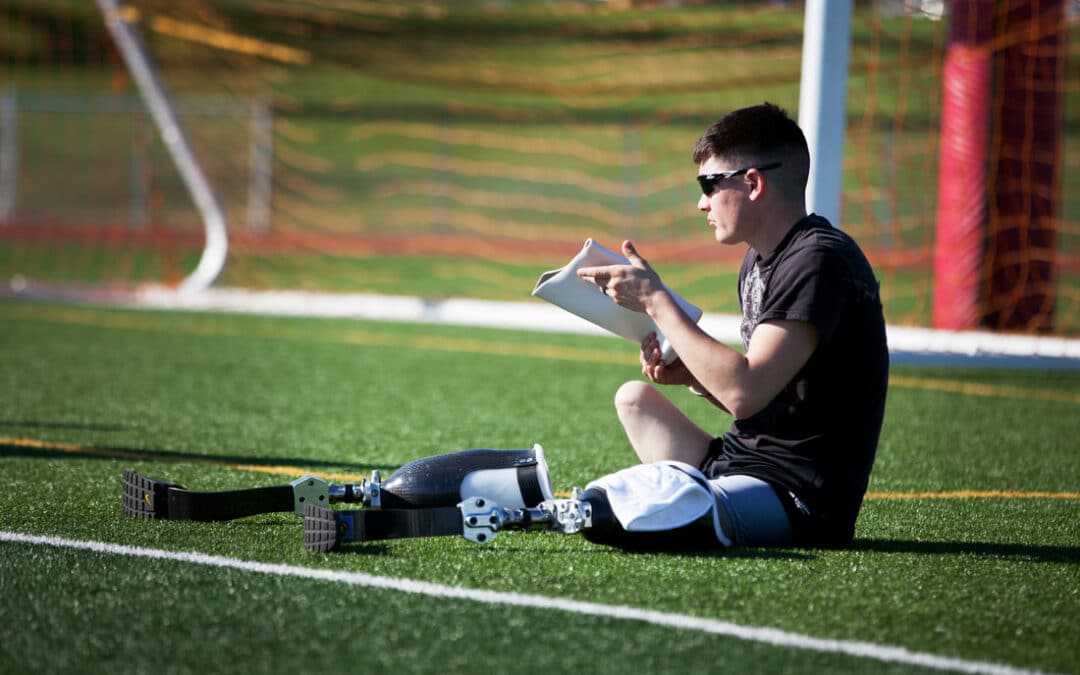Prosthetics are a beautiful medical invention that helps amputees in moving around. They perform the functions of a real leg, and at times, look like one.
Some users will need crutches or a walker when using a prosthetic leg. However, most can manage without any extra support. There are many aspects to be considered before you get one.
Here’s what you need to know if you plan to take the above the knee prosthetics route.
1. They Might Not Help
Many aspects come into play here. Your residual limb should be mobile, and there needs to be enough soft tissue to act as a cushion. If you have a circulation disorder, then a prosthetic may not be for you.
2. They Take Time
Above the knee, prosthetics are not quickly adopted since there’s no knee joint. You’ll face issues like perennial sweating, weakness in the limb, and phantom pain.
Following your rehabilitation plan is critical here. Rest assured, your prosthetist and physical therapist will help you overcome the issues in this phase.
3. They Need Customization
There are different types of above knee prostheses, but they are not one-size-fits-all.
Parts, like the socket and suspension system, are molded according to your residual limb. Hence, you need to make frequent trips to the prosthetist to get the measurements right
4. There’s Always a Newer Model
Even if you buy the best above knee prosthetic leg today, it might become obsolete within a year.
Prosthetic limb technology is advancing at a rapid pace. Microprocessor joints and integration surgeries have increased the sensory reception and range of motion.
Parts of an Above the Knee Prosthesis
It’s time to understand what are the different parts of this device. There are four major components in most modern-day prosthetics – socket, knee, pylon, and foot.
Let’s start with the easier ones first:
- Foot: It’s designed to take the shape of your functional leg’s foot. Unless you’re going for a high-end prosthesis, its function is simply to follow the body’s gait.
- Pylon: It’s a light-weight shaft that connects the knee and foot seamlessly. In more recent models, the pylon is adjustable and comes with shock-absorbers.
- Knee: This is an important part that determines the cost of the above knee prosthetics. You can choose a device from the market based on your activity levels and budget. The most straightforward kind of knee is a single-axis one, whereas the most advanced one has microprocessors and offers intelligent sensors.
Socket: In the initial phase, a diagnostic socket is implemented to check the alignment. It’s a plastic socket that is replaced by a laminated one in the later stage. The laminated one is usually made of carbon fiber and has a long life. If everything is in place, you can even get your favorite sports team’s logo embossed on it!
Maintenance

If you’re still reading, you now understand the challenges of using prosthetics. Now that you’re ready to get one, you may be wondering how to take care of them.
Here are eight things you should know as a new prosthetics user:
1. Washing your prosthesis daily is essential. Don’t use anything else apart from mild soap, and give the device enough time to dry. Regularly wiping the insides of the prosthesis will keep it free from bacterial infections.
2. Prostheses are designed to be worn with shoes. If the heels are not of the same height, it may cause stability issues. You can choose to wear high heels or any other footwear only after informing your intentions to a prosthetist.
3. Prosthetics socks are an integral part of your life now. Based on your doctor’s
recommendation, you can use a single-ply or multi-ply pair of socks. Ensure they fit perfectly and use the correct number of ply to avoid developing irritations.
4. The socket and liner are the root cause of skin infections. Follow the manufacturer’s hygiene instructions to ensure to provide the right kind of care. Importantly, do not try to trim or add pads to the socket since it might compromise the prosthesis’s safety.
5. In the initial few months, you have to take up many exercises. It will expose your residual limb to many scenarios in a short span. That allows you to adjust to get the perfect fit. Don’t hesitate to ask the prosthetist for multiple changes.
6. As an above the knee prosthetics user, you should not sleep with your limb on a pillow. You might get a hip flexion contracture, a condition that doesn’t let users straighten their hips. Instead, you can place a pillow between your legs to strengthen the outer thigh muscles.
7. Always have a handy kit with spare stump socks, antibiotics, and ointments. That will be your emergency stock for when you need a change. Moreover, you’ll be needing different ply socks due to frequent volume changes in your limb.
8. Periodic follow-ups are a must in the first year of usage. The doctors need to know if your body is accepting the prosthesis without causing any troubles. On the other hand, the prosthetists can make changes to the device if it isn’t comfortable to use.

Conclusion
The decision to get a prosthetic is determined by people’s urge to have an everyday social life. Don’t rush through this process. Talk to a few users and understand how it makes their lives better. Understand every little intricacy about prosthetics, and make a well-informed decision.
Taking care of your above knee prosthetics may sound very tedious. In reality, it’s like managing dental braces or any other medical device. It all comes down to those little things you do regularly – cleaning, checking, fixing.
Ultimately, the decision to get a prosthesis should be based on mutual consent and understanding between you and the doctor.
Besides above the knee prosthetics, there are many types of prosthetics. Find out more about them in this guide by Align Clinic.




